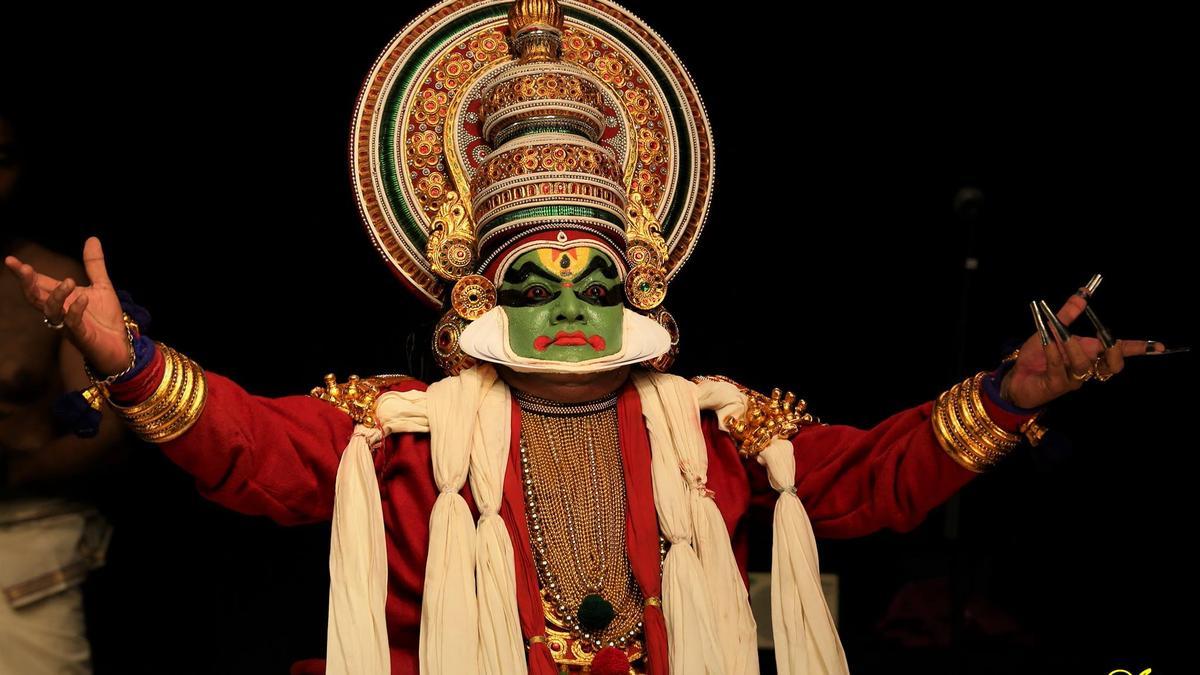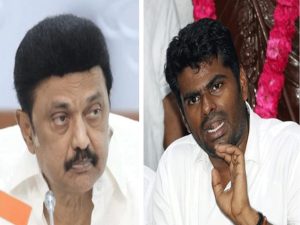
When Kalamandalam Krishnakumar joined Kalakshetra in Chennai as a teacher, the young Kathakali artiste had to unlearn and adapt to meet the institution’s demands of not just a Kathakali tutor but also a part-time Bharatanatyam dancer. This multifaceted training played a crucial role when he was later posted at his alma mater in Cheruthuruthy, not far from his native village in central Kerala.
“I taught Kathakali till my retirement in 2018, but sometimes on stage, I found Bharatanatyam footwork and movements better suited to the characters I portrayed,” Krishnakumar reminisces. Be it charming Kacha’s bonding with Devayani in her father Shukracharya’s ashram or sage Vishwamitra giving lessons on abhinaya to the Rati-Virati duo in Harischandracharitam, the blend of art forms proved enriching.
This year marks Krishnakumar’s 50th anniversary in Kathakali. Throughout his journey, he has persistently reinvented himself and his craft. He transitioned from the folksy Ayyappanpattu to Kathakali and then switched from the southern school of Kathakali to the northern.
Krishnakumar is proud to be the first full-fledged Kathakali artiste in his family. Reflecting on his early years, he notes, “As a teenager, I had no clue about the stylistic differences between the two streams. I made the change because the lone teacher of the southern style, Madavoor Vasudevan Nair, used to be occupied with night-long shows.”
The switch happened under the mentorship of the influential guru Ramankutty Nair, who directed Krishnakumar to Padmanabhan Nair to learn the northern (Kalluvazhi) methodology. Further training under Vazhenkada Vijayan and Kalamandalam Gopi spanned almost a decade. However, despite his rigorous training, Krishnakumar faced limited opportunities to perform initially.
“I began to play the harmonium for a teacher. I wanted to learn the instrument since my friends told me it could fetch a job abroad.” The turning point in his career came with a job vacancy for a Kathakali tutor at Kalakshetra. Though primarily a Bharatanatyam institution, Krishnakumar applied, obtained the position, and immersed himself in learning Bharatanatyam’s repertoire.
.
At this juncture, Krishnakumar’s batchmate Kalamandalam Vijayakumar and makeup artiste Barbara from Manchester invited him to perform at events in the U.K. These opportunities required extended breaks from his teaching responsibilities, eventually leading him to resign from his position at Kalakshetra and return to Kerala.
In 1990, Kalamandalam appointed him to its Kathakali department, marking the beginning of a new chapter. He eventually headed the department, which had evolved into a deemed university by then. Over three decades, Krishnakumar amassed a vast number of disciples and a plethora of performances both within the state and internationally. “I have performed all the major hero and anti-hero characters, but I don’t quite like playing the villainous red-bearded roles. I have shared platforms with exponents of both schools of Kathakali. Over the years, I have realized the art form should adapt to contemporary sensibilities,” says Krishnakumar.
Interestingly, Krishnakumar is now reconnecting with Ayyappanpattu, the traditional folk art he learned from his father Achuthan Nair as a young boy. Achuthan had briefly trained in Kathakali when Kalamandalam was based in Thiruthiparambu, near his village. “I think I was destined to become the first full-fledged Kathakali artiste in my family,” he muses, fingers gently tracing the contours of his father’s hourglass-shaped udukku drum. “Occasionally, I play this for my grandchild.”
As Krishnakumar reflects on his fifty years in Kathakali, his journey is not merely about personal achievements but also about the continuous evolution and adaptability in the art. His experience has shown that the traditional forms, when blended and reinterpreted with an openness to change, can appeal to contemporary audiences while retaining their classical essence. This milestone year is not just a personal celebration, but a tribute to the enduring spirit of Kathakali and its ability to transcend time and geography.












